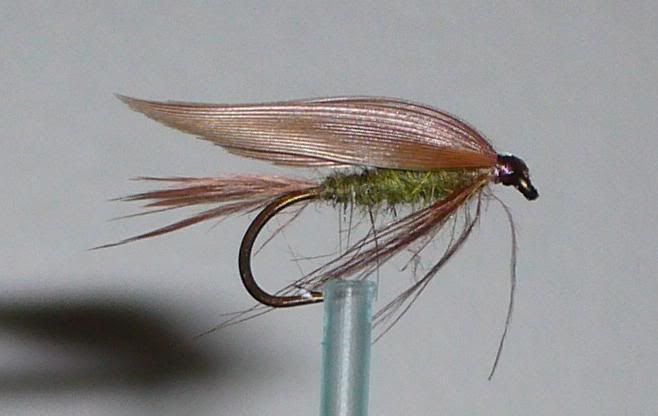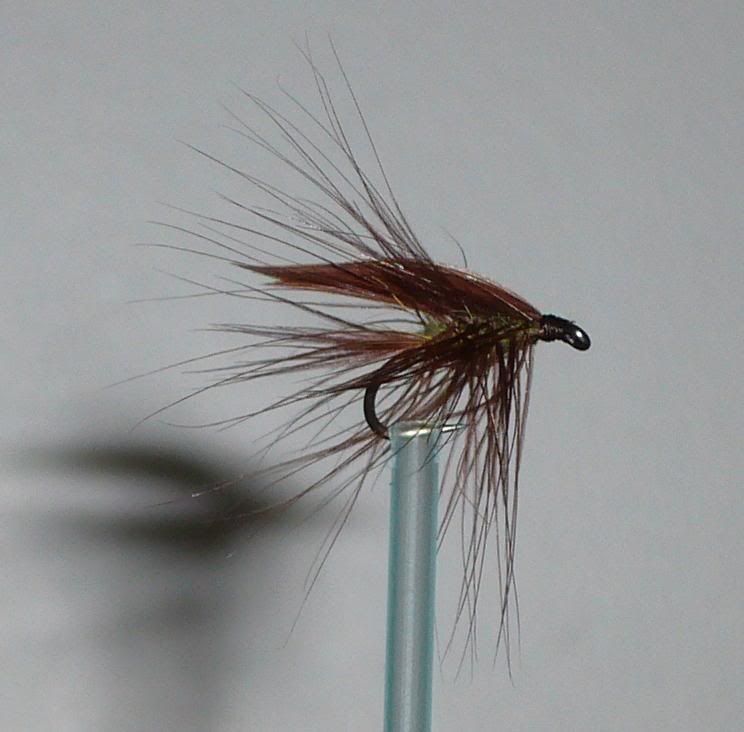Hi,
Donald's post on the Tummel style of fly got me thinking about how different "styles" of flies have emerged. There's not just "hackled" and "winged" wet flies, but the wingless divide into "spiders", "flymphs", and "wingless palmered" flies (which might be called "bumbles"?), and winged flies give you Clyde, Tummel, "classic" (for lack of a better term), Invicta style, and so on.
So, having tied up a "Tummel style" fly, I thought I would put together a few versions of the same "fly", tied in a few different "styles".
Here is a "standard" version of a "Cow Dung":

And here is the "Tummel-style" version:

Tied following the pattern for an Invicta (palmered and winged), you end up with something like the following.
Unfortunately, the only hackle feather I had had fibres about 3 times longer than they should be, however, these are very soft and should produce nice action in the water all the same:

Finally, here's a "spider version":

And, personally, I think all of these will easily catch fish. The spider and the invicta version would be great in riffles due to the movement in the hackles. Having read Donald's site, I realise that the Tummel-style is for getting down deep as the bare hook will cut through the water easily. And the standard pattern should produce a nice profile when twitched and teased through a slower glide section.
Most importantly, of course, is even this limited collection requires one to have at least 4 versions of each fly. And, if you want to have multiple copies on the water, that means one has lots of reasons to be at the tying bench! Enjoy!
- Jeff




 Reply With Quote
Reply With Quote



